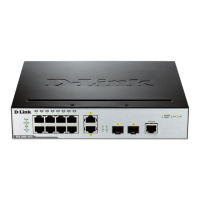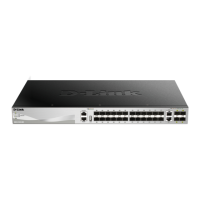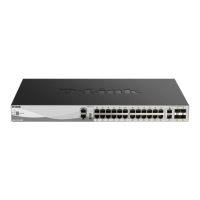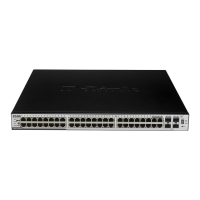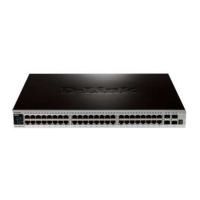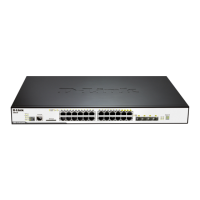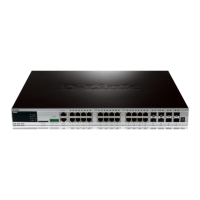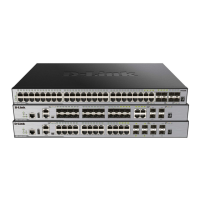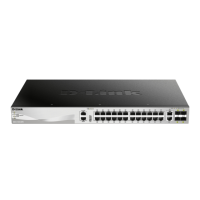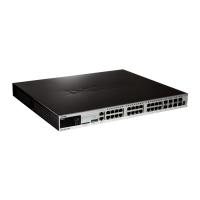DGS-3024 Gigabit Ethernet Switch Manual
Select an entry and click Modify to access the following window:
Figure 6- 9. Static Router Ports Settings – Edit window
The following parameters can be viewed or set:
Parameter Description
VID (VLAN ID)
This is the VLAN ID that, along with the VLAN Name, identifies the VLAN where the
multicast router is attached.
VLAN Name
This is the name of the VLAN where the multicast router is attached.
Member Ports
These are the ports on the Switch that will have a multicast router attached to them.
Click Apply to implement the new settings, Click the Show All Static Router Port Entries link to return to the Current
Static Router Port Entries window.
Spanning Tree
This Switch supports two versions of the Spanning Tree Protocol: 802.1d STP and 802.1w Rapid STP.
802.1w Rapid Spanning Tree
The Switch implements two versions of the Spanning Tree Protocol, Rapid Spanning Tree Protocol (RSTP) as defined by
the IEEE 802.1w specification and a version compatible with the IEEE 802.1d STP. RSTP can operate with legacy
equipment implementing IEEE 802.1d, however the advantages of using RSTP will be lost.
The IEEE 802.1w Rapid Spanning Tree Protocol (RSTP) evolved from the 802.1d STP standard. RSTP was developed in
order to overcome some limitations of STP that impede the function of some recent switching innovations, in particular,
certain Layer 3 functions that are increasingly handled by Ethernet switches. The basic function and much of the
terminology is the same as STP. Most of the settings configured for STP are also used for RSTP. This section introduces
some new Spanning Tree concepts and illustrates the main differences between the two protocols.
Port Transition States
An essential difference between the two protocols is in the way ports transition to a forwarding state and in the way this
transition relates to the role of the port (forwarding or not forwarding) in the topology. RSTP combines the transition states
disabled, blocking and listening used in 802.1d and creates a single state Discarding. Ports do not forward packets. In the
STP port transition states disabled, blocking or listening or in the RSTP port state discarding, there is no functional
difference, the port is not active in the network topology. Table 6-1 below compares how the two protocols differ regarding
the port state transition.
23

